Abstract
Conditioned medium was obtained from suspension cultures of soybean (Glycine max L. Merrit) cells after incubating them for 4 to 8 days with rhizobia which were separated from the soybean cells by two dialysis bags, one within another. This conditioned medium from the plant cell side (PCM) of the two membranes was used to elicit and influence nitrogenase activity (acetylene reduction) in rhizobia. When conditions for obtaining PCM from the soybean cell suspension cultures were varied, it could be shown that freshly grown rhizobia were able to induce active compounds in the PCM. These compounds caused acetylene reduction activity in test rhizobia under conditions where control rhizobia, containing various substrates, showed little or no acetylene reduction activity. Rhizobia that were already capable of acetylene reduction could not induce such compounds in the PCM when this was included with test rhizobia. The PCM from soybean cultures was also found to aid the expression of nitrogenase activity in suspension cultures of rhizobia normally associated with either peas, lupins, broad beans, or clovers. This is the first communication indicating nitrogenase activity in freeliving cultures for various species of rhizobia.
Full text
PDF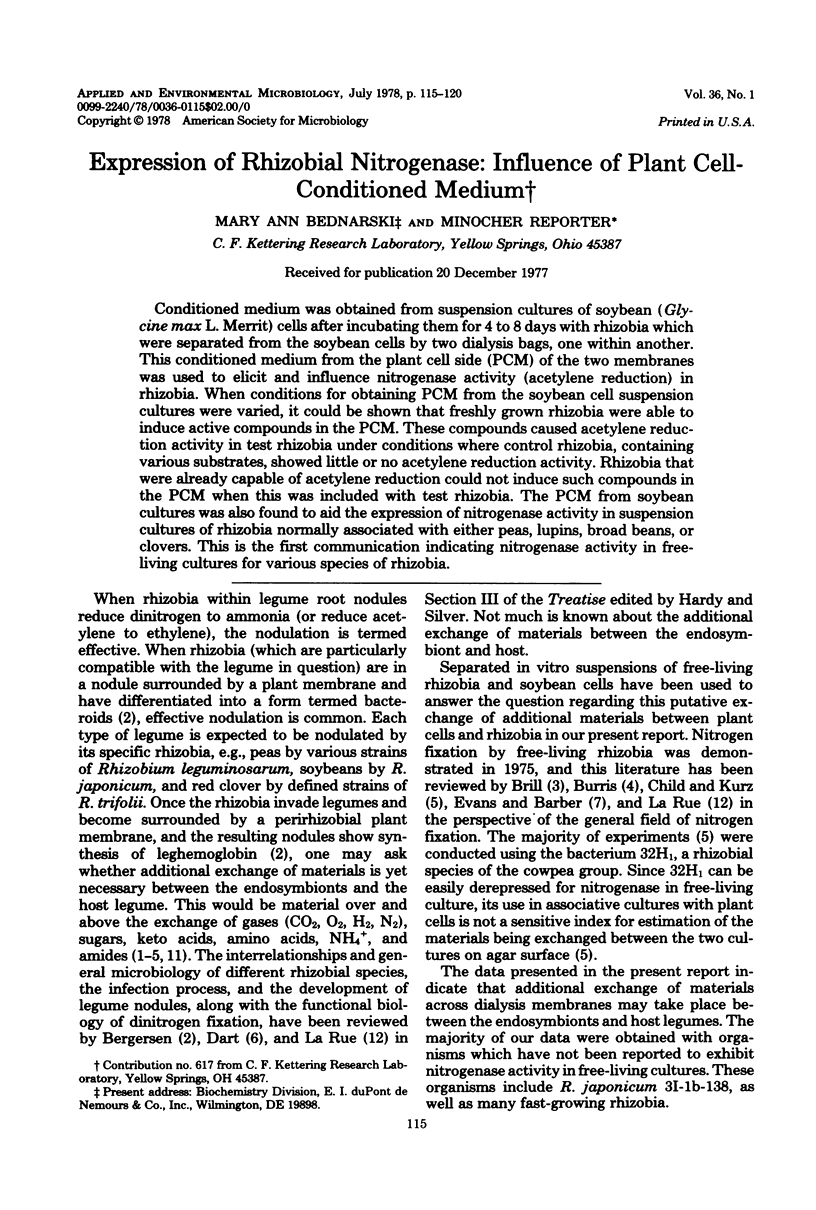
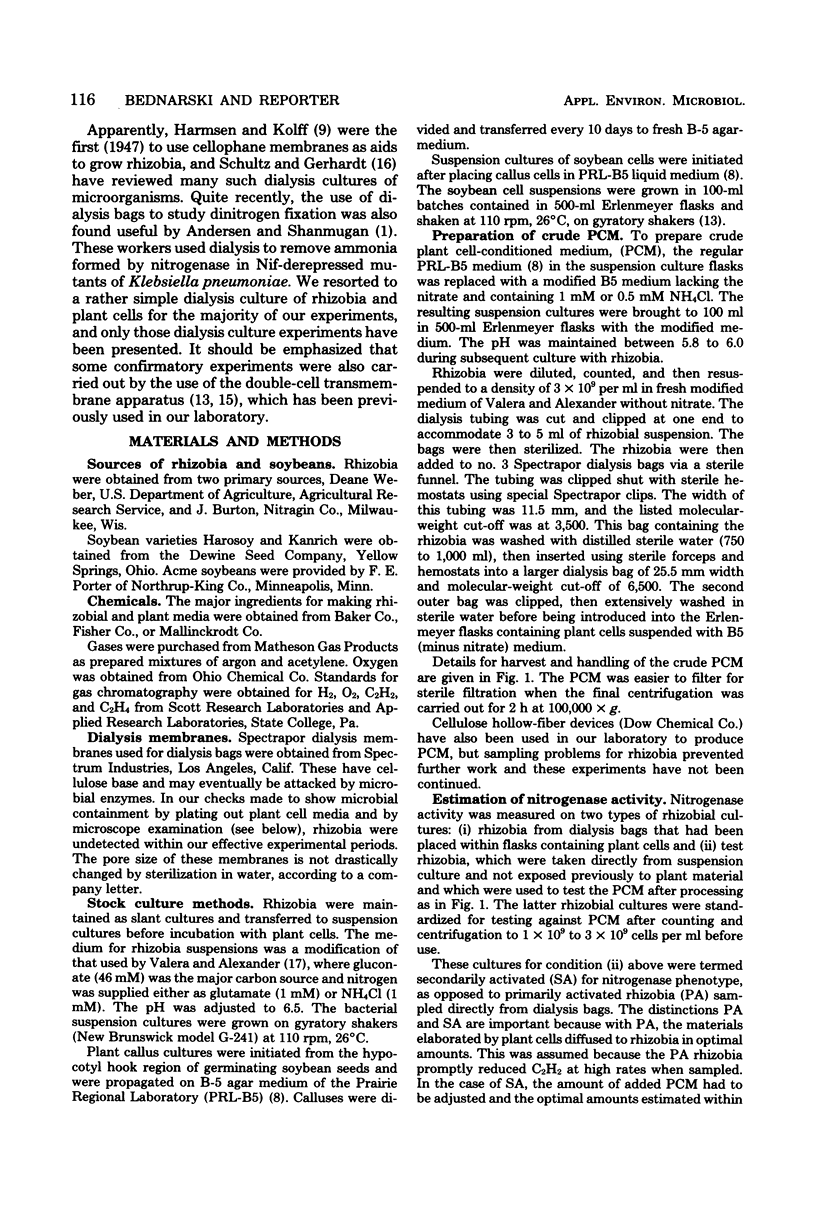
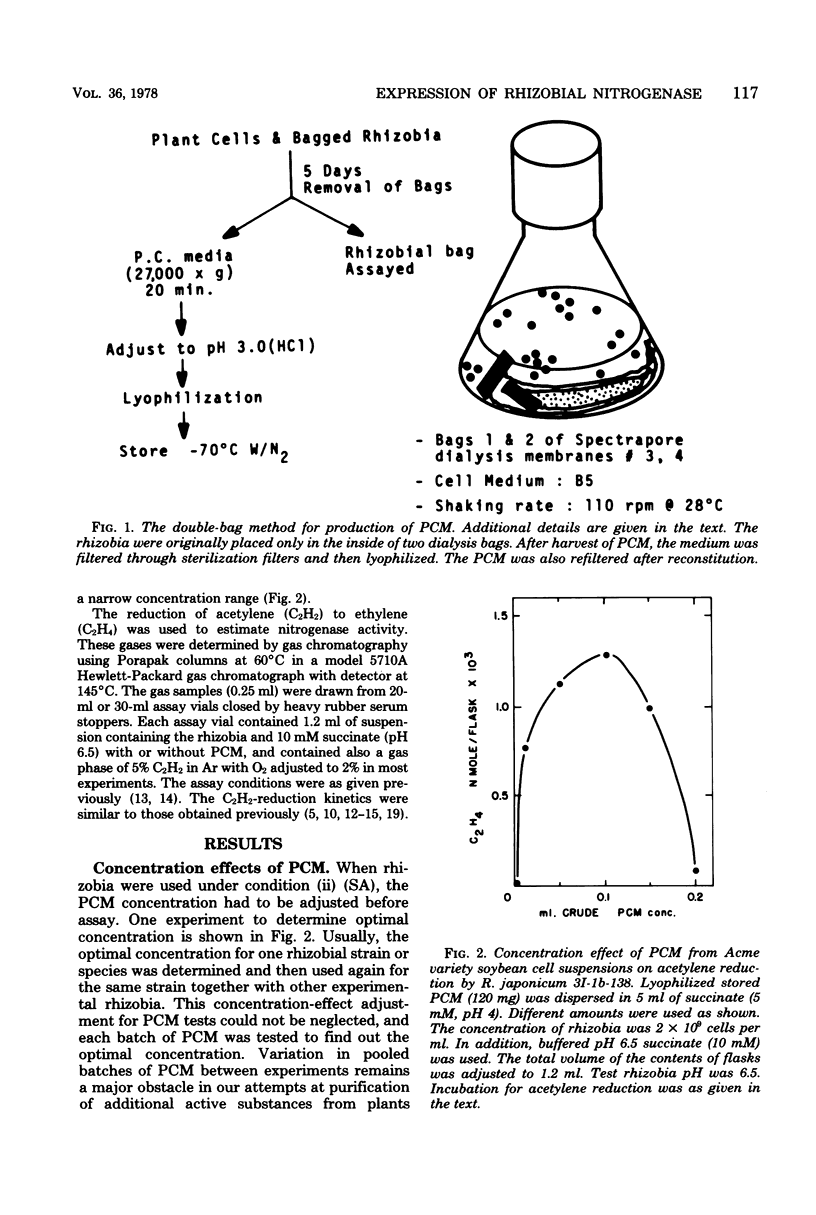
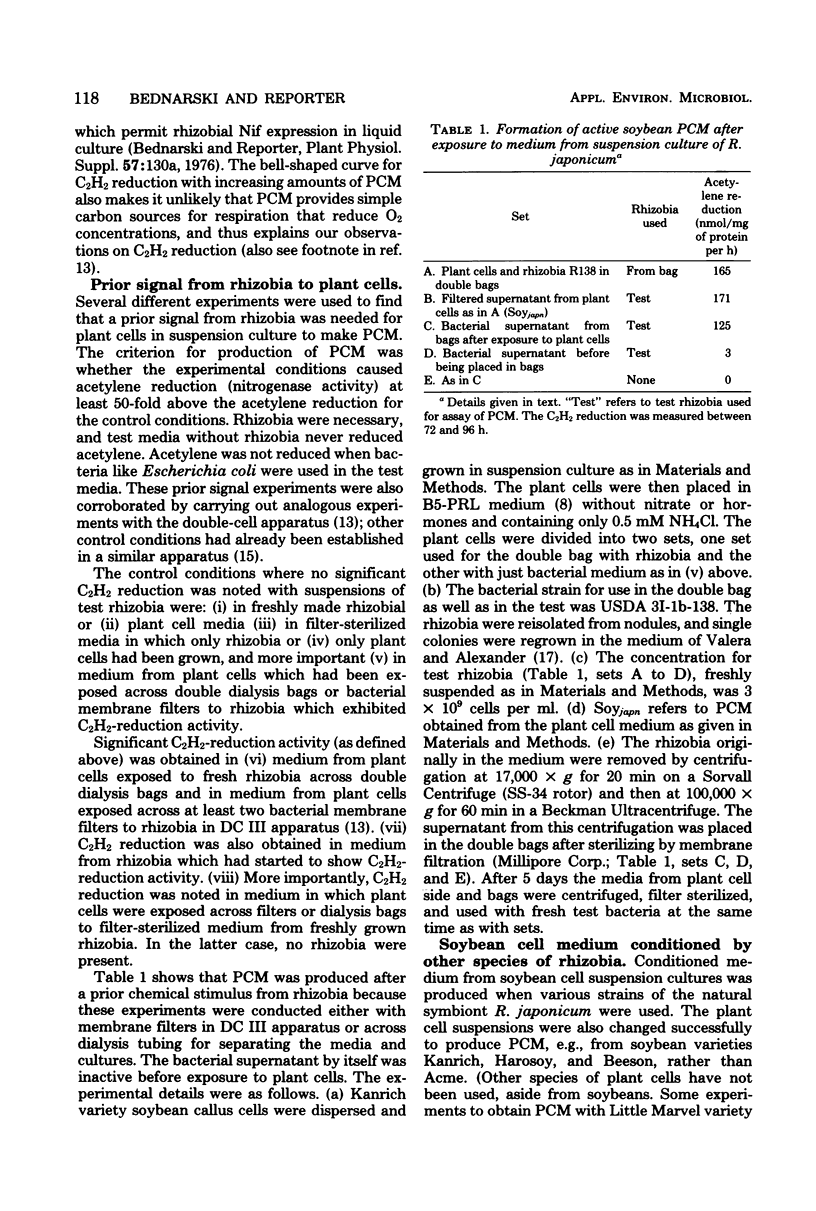
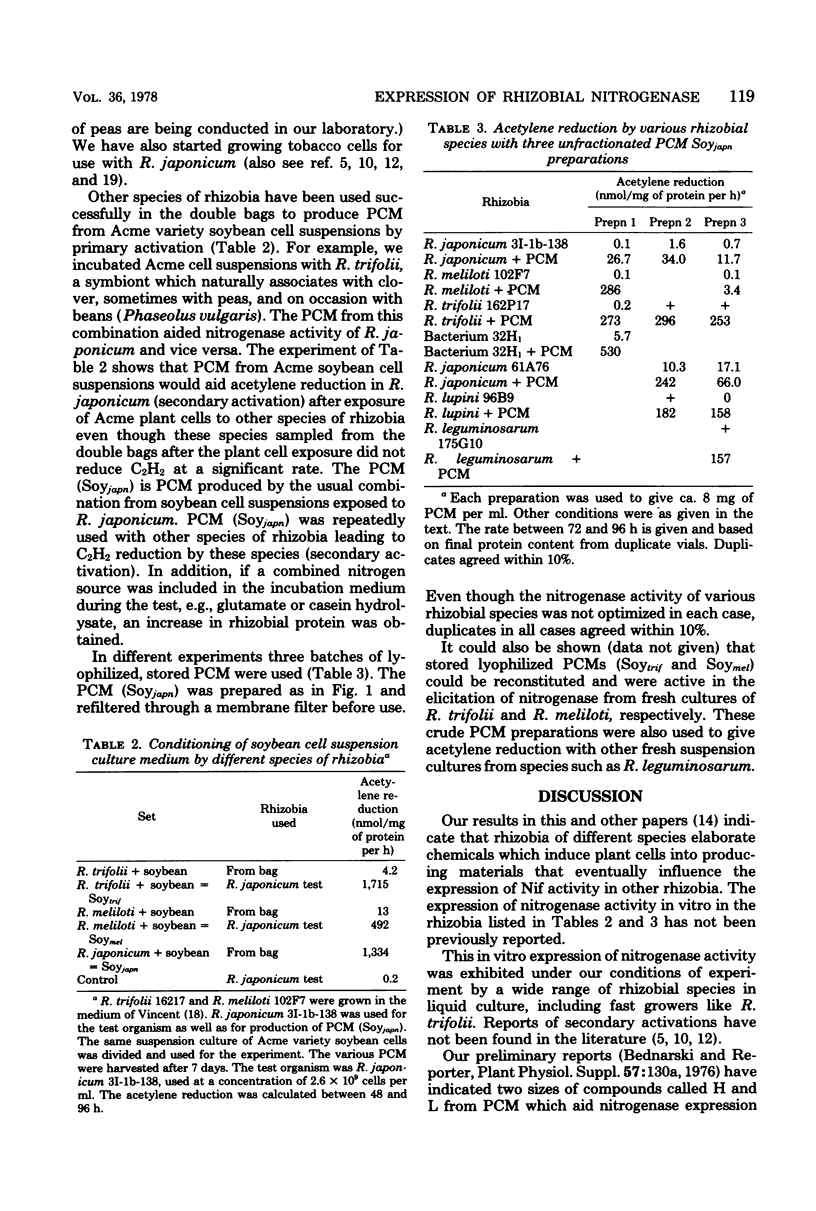
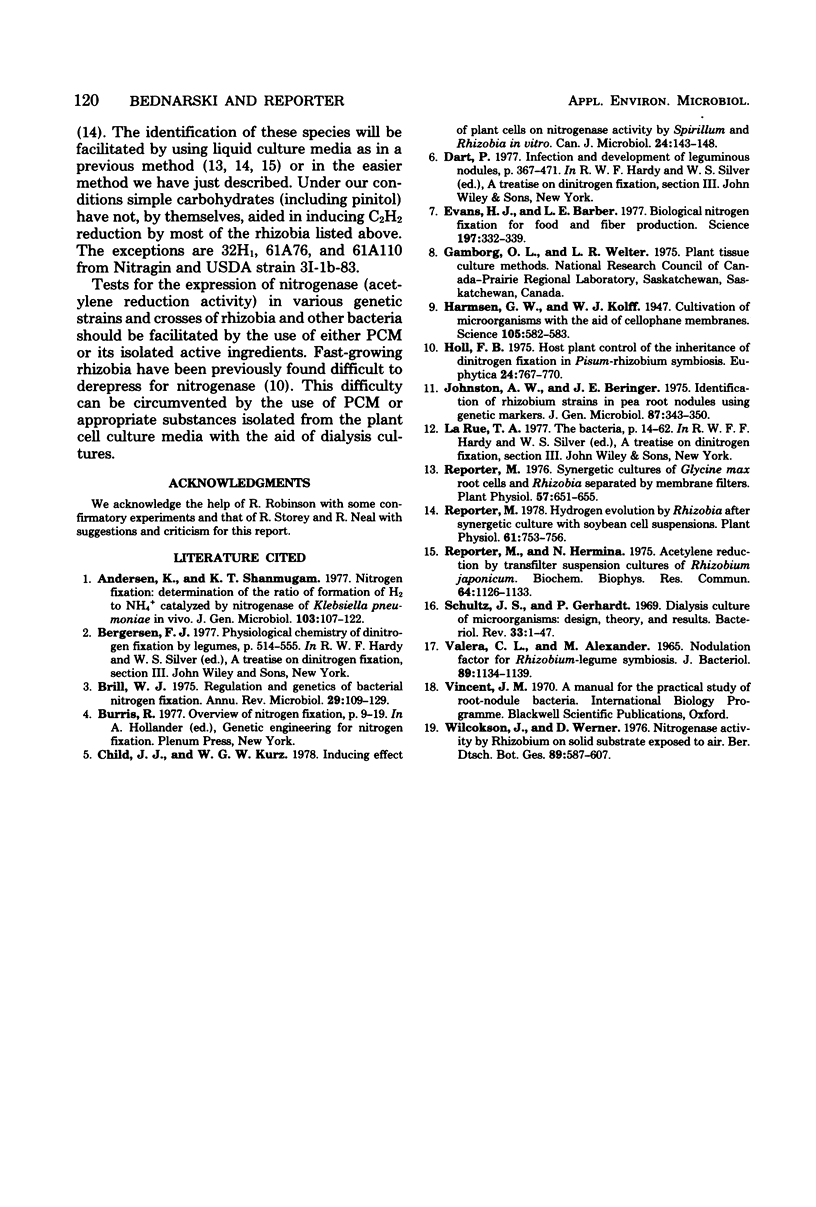
Selected References
These references are in PubMed. This may not be the complete list of references from this article.
- Andersen K., Shanmugam K. T. Energetics of biological nitrogen fixation: determination of the ratio of formation of H2 to NH4+ catalysed by nitrogenase of Klebsiella pneumoniae in vivo. J Gen Microbiol. 1977 Nov;103(1):107–122. doi: 10.1099/00221287-103-1-107. [DOI] [PubMed] [Google Scholar]
- Brill W. J. Regulation and genetics of bacterial nitrogen fixation. Annu Rev Microbiol. 1975;29:109–129. doi: 10.1146/annurev.mi.29.100175.000545. [DOI] [PubMed] [Google Scholar]
- Child J. J., Kurz W. G. Inducing effect of plant cells on nitrogenase activity by Spirillum and Rhizobium in vitro. Can J Microbiol. 1978 Feb;24(2):143–148. doi: 10.1139/m78-026. [DOI] [PubMed] [Google Scholar]
- Evans H. J., Barber L. E. Biological nitrogen fixation for food and fiber production. Science. 1977 Jul 22;197(4301):332–339. doi: 10.1126/science.197.4301.332. [DOI] [PubMed] [Google Scholar]
- Harmsen G. W., Kolff W. J. Cultivation of Microorganisms With the Aid of Cellophane Membranes. Science. 1947 May 30;105(2735):582–583. doi: 10.1126/science.105.2735.582-a. [DOI] [PubMed] [Google Scholar]
- Johnston A. W., Beringer J. E. Identification of the rhizobium strains in pea root nodules using genetic markers. J Gen Microbiol. 1975 Apr;87(2):343–350. doi: 10.1099/00221287-87-2-343. [DOI] [PubMed] [Google Scholar]
- Reporter M., Hermina N. Acetylene reduction by transfilter suspension cultures of Rhizobium japonicum. Biochem Biophys Res Commun. 1975 Jun 16;64(4):1126–1133. doi: 10.1016/0006-291x(75)90811-6. [DOI] [PubMed] [Google Scholar]
- Reporter M. Hydrogen (h(2)) evolution by rhizobia after synergetic culture with soybean cell suspensions. Plant Physiol. 1978 May;61(5):753–756. doi: 10.1104/pp.61.5.753. [DOI] [PMC free article] [PubMed] [Google Scholar]
- Reporter M. Synergetic Cultures of Glycine max Root Cells and Rhizobia Separated by Membrane Filters. Plant Physiol. 1976 Apr;57(4):651–655. doi: 10.1104/pp.57.4.651. [DOI] [PMC free article] [PubMed] [Google Scholar]
- Schultz J. S., Gerhardt P. Dialysis culture of microorganisms: design, theory, and results. Bacteriol Rev. 1969 Mar;33(1):1–47. doi: 10.1128/br.33.1.1-47.1969. [DOI] [PMC free article] [PubMed] [Google Scholar]
- VALERA C. L., ALEXANDER M. NODULATION FACTOR FOR RHIZOBIUM-LEGUME SYMBIOSIS. J Bacteriol. 1965 Apr;89:1134–1139. doi: 10.1128/jb.89.4.1134-1139.1965. [DOI] [PMC free article] [PubMed] [Google Scholar]


